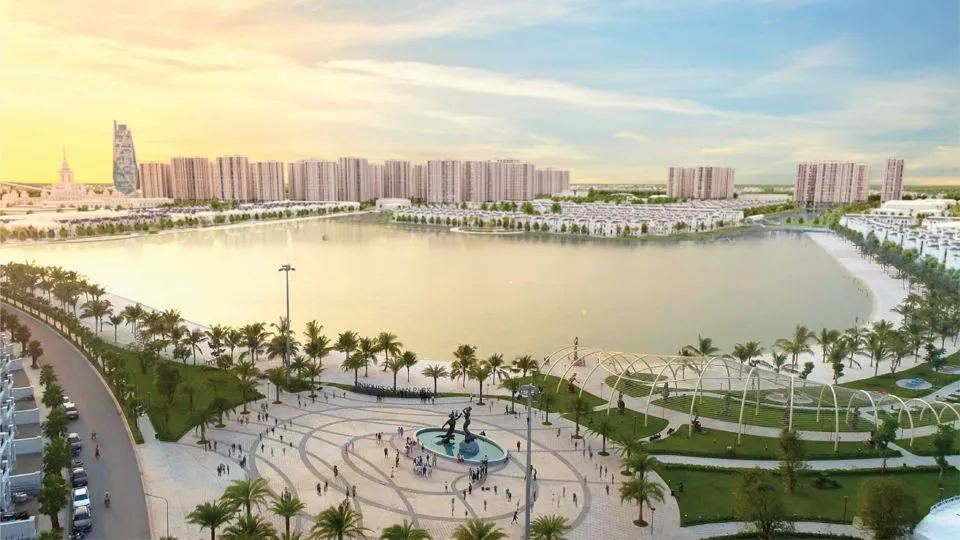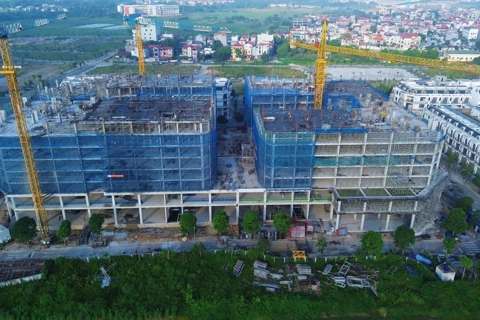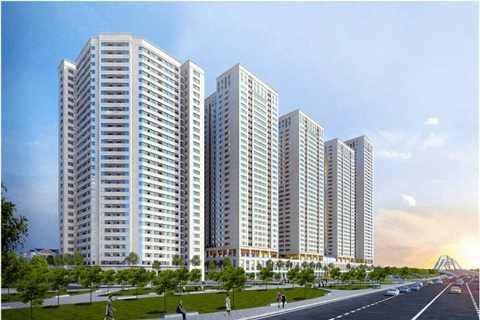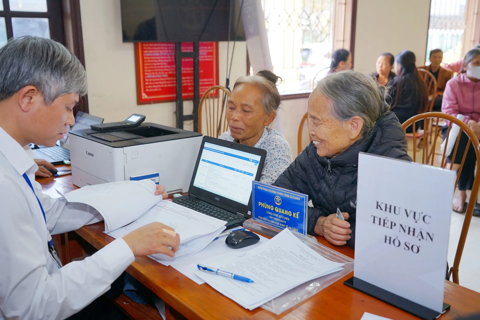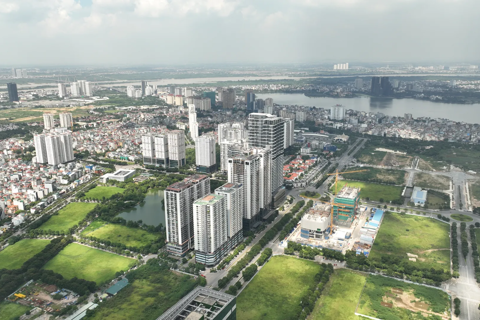Emergence of new urban areas in Hanoi
The capital city has been committed to improving infrastructure and transportation systems which motivate the city's development while fostering real estate expansion.
Hanoi has seen the development of many new urban and residential areas. In particular, large urban areas with green and smart features are emerging, significantly reshaping the capital's landscape.
| Vinhomes Ocean Park in Gia Lam, Hanoi. Photo: Chien Cong/The Hanoi Times |
Heavy investment in infrastructure
Following the expansion of its administrative boundaries, Hanoi, which serves as the country's political and economic hub, has attracted significant government resources, particularly investment in transportation infrastructure.
This strategic emphasis on transportation was considered essential to facilitate the expansion of the city's development footprint.
A number of key transportation initiatives have not only been completed but also put into operation. Highways such as Lang - Hoa Lac, Phap Van - Cau Gie, Hanoi - Bac Giang - Lang Son, Hanoi - Thai Nguyen, Hanoi - Haiphong - Quang Ninh, Nhat Tan - Noi Bai - Lao Cai, as well as the interconnected thoroughfares: Ring Road No.1, Ring Road No.2, Ring Road No.3, and Ring Road No.3.5, together not only form a seamless transportation network but also catalyze the capital's economic boom.
Of particular significance is Hanoi's achievement in building major bridges across the Red River since the expansion of its administrative boundaries. Notable examples include Vinh Tuy 1 (opened to traffic in 2010), Dong Tru (2014), and Nhat Tan (2015). This strategic development has eased the traffic burden that once rested solely on the shoulders of the Thang Long, Long Bien, and Chuong Duong bridges. Moreover, these bridges facilitate critical connectivity along the east-west economic corridor, fundamentally transforming the city's urban landscape.
Thanks to these bridges, eastern Hanoi has become a burgeoning construction site, home to a number of prominent real estate companies such as Vingroup, Ecopark, Masterise, T&T, BRG Group, and Eurowindow. Accompanying these developments is the emergence of "mega-urban" projects such as Vinhomes Ocean Park, Eurowindow Twin Parks, Masteri Waterfront, Viet Hung, and Ecopark, all conceived with an ecologically oriented urban development vision. The emergence of these large-scale projects has led to a robust increase in property values.
From 2017 to the present, eastern Hanoi has experienced the largest increase in real estate prices, with an average annual growth rate of 16%. In contrast, the western and northern parts of the city experienced more modest increases, averaging around 7% per year.
Similar to developments in the eastern and western areas of Hanoi over the past decade, significant investments have been made to improve the transportation infrastructure connecting the city center. These investments include the Thang Long Boulevard, the Cat Linh-Ha Dong urban railway, and the To Huu and Le Van Luong radial roads.
In addition, major traffic arteries have been expanded and improved, including the Nguyen Xien - Chu Van An Boulevard - Xa La route, and Ring Road No.2.5, which passes through districts such as Hoang Mai, Thanh Xuan, Cau Giay, Bac Tu Liem and Tay Ho.
Notably, the extension of Le Trong Tan Road to Ring Road No.3 and Chu Van An Boulevard has facilitated the establishment of a new route from Xa La to the city center, greatly improving travel convenience.
In the western region, notable projects include An Khanh urban area, Vinhomes Smart City, Hinode Royal Park, and Lideco.
Meanwhile, the southern region of the city is home to several major projects such as Cau Buu Urban Area (21 ha), Xa La Urban Area (20 ha), and Inoha City Commercial and Service Urban Area, part of a sprawling industrial-urban complex covering over 600 ha.
Of note, the north is undergoing significant changes as Dong Anh rural district prepares to be upgraded to urban district status. Plans include the development of a northern city encompassing Me Linh, Soc Son, and Dong Anh districts. This region is expected to soon become the central hub of Hanoi's real estate landscape.
| "Foreign investors, particularly real estate companies from Japan, South Korea, Singapore, and other countries, have shown a willingness to invest in Hanoi's real estate sector, with a focus on high-end real estate projects. Their rationale lies in the belief that overall land prices in Hanoi are comparatively 30% to 50% lower than those in Ho Chi Minh City. This underlying factor contributes significantly to the increasing allure of Hanoi's real estate market for both domestic and international investors," said Nguyen Van Dinh, Vice Chairman of the Vietnam Real Estate Association. |
Pushing for completion of the planning process
Hanoi is in the process of completing major plans that will set the vision for its development in the coming years. However, experts have expressed concern that while Hanoi's urbanization has progressed, rapid development has brought certain consequences, including uneven development, lack of synchronicity, scattered investments, and lack of centralization.
In addition to external reasons related to structural and policy issues, internal factors stemming from enterprises and local administrations that have not meticulously adhered to prescribed plans have also contributed to the misallocation of land resources. Many urban areas have remained undeveloped for several years following land clearance. This situation is particularly evident in certain areas such as Me Linh, Hoai Duc, and Thanh Tri.
According to a report issued by the Hanoi People's Committee, there are currently 712 projects in the region that are facing sluggish implementation, and to date, the city has resolved over 400 of these projects.
"While acknowledging the positive progress made in socio-economic development since the administrative boundaries were expanded, it's important to recognize the fact that several projects have been delayed or even abandoned for more than two decades, revealing flaws in the planning process. Planners often focus solely on the planning perspective without considering economic viability. As a result, many projects deemed unfavorable by businesses are not implemented, leading to abandonment and wasted resources," said Nguyen The Diep, vice chairman of the Hanoi Real Estate Club.
However, it is undeniable that since the expansion of the administrative boundaries, Hanoi has made efforts to plan and improve infrastructure and transportation systems. This commitment has acted as a driving factor for the city's development, creating numerous opportunities for real estate expansion.
Through the plan, Hanoi will continue to prioritize investment in the transportation network, restructure the demographic composition, and create fresh momentum for the development of central and satellite cities (such as Soc Son, Son Tay), including Hoa Lac, Xuan Mai, and Phu Xuyen. This network of new urban centers is poised emerge as a focal point to drive growth and innovation in the real estate market in the coming period.

